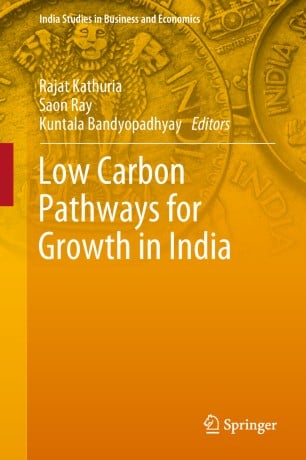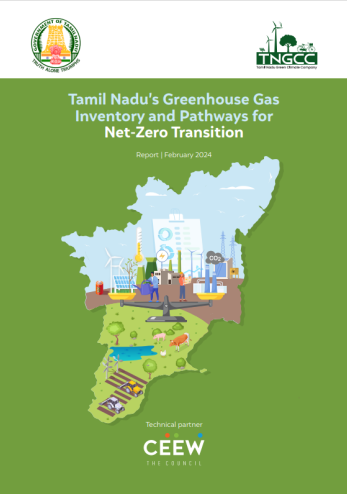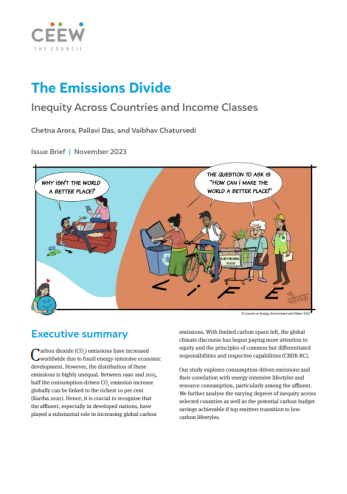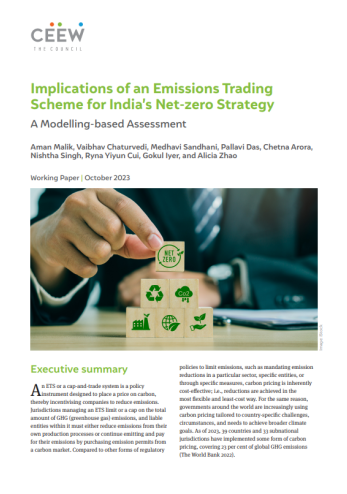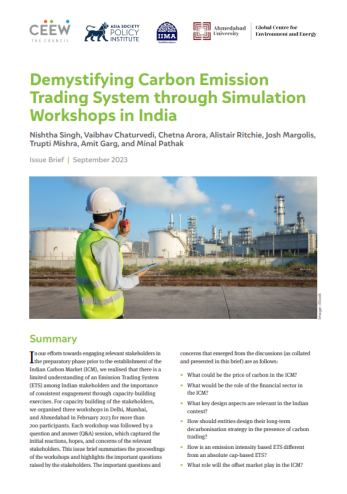Book Chapter
The Cost of Inaction on Mitigating Climate Change
A Preliminary Analysis
Vaibhav Chaturvedi
March 2018 | Low-carbon Economy
Suggested Citation: Chaturvedi, Vaibhav. 2018. "Cost of Inaction on Mitigating Climate Change: A Preliminary Analysis." In Low Carbon Pathways for Growth in India, pp. 39-52. Springer, Singapore
Overview
This chapter provides first order approximations of climate change impacts on some key sectors within India. It examines output losses of three major food crops—rice, maize and wheat. It also focuses on deaths related to three important diseases—diarrhea, malaria, and dengue. Further, it also examines the increased requirement of power generation for meeting peak hour demand of electricity with rising temperatures. Overall, it summarises the cost inaction calculated across the sectors focussed in this study.
Key Highlights
- Production losses in rice, wheat, and maize alone could go up-to USD 208 billion and USD 366 billion in 2050 and 2100 respectively (all prices are in 2010 USD).
- Additional power generation could require an incremental capital investment of USD 33 billion and USD 123 billion in 2050 and 2100 respectively to meet higher cooling energy needs of India.
- Diarrhoeal deaths will decrease with increasing incomes. Deaths due malaria will increase to 5000 in 2050, and to 19,500 in 2100.
- If disease-related deaths are valued at lifetime earnings, then loss of economic output will be USD 2.5 billion and USD 21 billion in 2050 and 2100.
- Deaths related to malaria are bound to increase significantly and the resulting loss of economic output is USD 20.7 billion in 2100 for malaria alone.
- When nonlinear impacts at higher temperatures are included and other sectors are also valued, the present estimate of cost of inaction is bound to multiply many folds.
- Apart from the three sectors (agriculture, health and energy), climate change impacts hydrological flows, biodiversity, etc., and increased intensity and frequency of extreme events are also critical.
- Temperature-induced higher peak load and cooling energy demand will lead to additional installed capacity of 36 GW in 2050 and 136 GW in 2100.
- Loss in rice production (impact sensitivity) per 1 degree Celsius increase was 4 per cent to 20 per cent.
- Loss in maize production (impact sensitivity) per 1 degree Celsius increase was 32 per cent to 50 per cent.
- Loss in wheat production (impact sensitivity) per 1 degree Celsius increase was 5 per cent to 20 per cent.
- A 3.5 degrees Celsius increase in average temperature by 2100 can result in a decline of 72 to 90 per cent in the output of maize, 12 to
- 52 per cent in the output of rice and 15 to 52 per cent in the output of wheat.
- A conservative range of 45 per cent (1.19 per cent of India’s GDP in 2050) and 59 per cent (1.17 per cent of India’s GDP in 2100) is estimated as the cost of global inaction on mitigating climate change.
A conservative range of 45 per cent (1.19 per cent of India’s GDP in 2050) and 59 per cent (1.17 per cent of India’s GDP in 2100) is estimated as the cost of global inaction on mitigating climate change.




